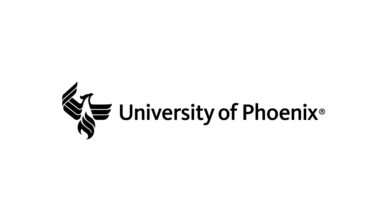Gossamer Bio Announces Seralutinib Meets Primary Endpoint in Phase 2 TORREY Study in PAH

– Primary Endpoint, Change in PVR at Week 24, Met with P-Value of 0.0310 –
– Secondary Endpoint, Change in 6MWD, Numerically Favored Seralutinib –
– Statistically Significant Improvements Observed in NT-proBNP and ECHO Measures of Cardiac Structure and Function –
– Consistently Positive Results Seen Across Pre-Specified Sub-Groups, Including Statistically Significant Placebo-Adjusted Improvements of 21% in PVR and 37 Meters in 6MWD in WHO Functional Class III Patients –
– Seralutinib was Well Tolerated and Avoided High Frequency Adverse Events Observed in the Imatinib IMPRES Study –
SAN DIEGO–(BUSINESS WIRE)–Gossamer Bio, Inc. (Nasdaq: GOSS), a clinical-stage biopharmaceutical company focused on discovering, acquiring, developing and commercializing therapeutics in the disease areas of immunology, inflammation and oncology, today announced topline results for the TORREY Phase 2 study of seralutinib in patients with pulmonary arterial hypertension (PAH). Seralutinib is a tyrosine kinase inhibitor targeting PDGFRα/β, CSF1R, and c-KIT, specifically designed to be delivered via dry powder inhaler for the treatment of pulmonary hypertension.
“We are very pleased to share that seralutinib significantly improved hemodynamic, biomarker, and right heart structural and functional measures in a heavily treated PAH patient population,” said Faheem Hasnain, Co-Founder, Chairman and CEO of Gossamer. “Importantly, these efficacy results were paired with a favorable safety and tolerability profile, something that has challenged past development of tyrosine kinase inhibitors in PAH.”
“Though many PAH therapeutic options have become available over the past two decades, the majority of patients are still falling short of their treatment goals,” said Dr. Raymond Benza, a Professor of Medicine in the Cardiovascular Division at the Ohio State University. “New mechanisms of action are desperately needed, and the strong concordance of the results generated in the TORREY study, particularly the impact seen on cardiac measures of disease progression, suggest that seralutinib could be an important future therapy for patients with PAH.”
“The TORREY results represent a significant step forward in unlocking the promise of safely using tyrosine kinase inhibitors to treat PAH,” said Dr. Ardeschir Ghofrani, Professor of Pulmonary Vascular Research at Justus Liebig University, Giessen, Germany and Head of the Pulmonary Hypertension Division at the University Hospital in Giessen. “The efficacy results generated with seralutinib in the context of a favorable safety and tolerability profile highlight compelling potential differentiation for seralutinib as an anti-proliferative, anti-inflammatory, and anti-fibrotic therapeutic candidate with possible reverse remodeling effects.”
TORREY Study Overview and Baseline Characteristics
The Phase 2 TORREY study enrolled 86 patients with WHO Functional Class (FC) II or III PAH, with 42 randomized to the placebo arm and 44 randomized to the seralutinib arm. The primary endpoint of the study was change from baseline to Week 24 in pulmonary vascular resistance (PVR). The secondary endpoint was change in six-minute walk distance (6MWD) from baseline to Week 24.
Patients remained on their background PAH therapies during the study. At baseline, 57% of patients were on background triple therapy, consisting of three classes of vasodilator treatments. The mean baseline PVR and 6MWD of randomized patients were ~669 dynes*s/cm5 and ~408 meters, respectively. The treatment and placebo arms were generally well balanced, except for baseline WHO Functional Class: 20 FC II and 22 FC III patients were randomized to the placebo arm, while 30 FC II and 14 FC III patients were randomized to the seralutinib arm.
Efficacy Results – PVR and 6WMD
A mean difference in PVR between the placebo and seralutinib arms of -96.1 dynes (p = 0.0310), equating to a placebo-corrected improvement of 14.3%, was observed in the study. An observed mean difference in 6MWD between placebo and seralutinib of 6.5 meters numerically favored the seralutinib arm. Changes in PVR favored seralutinib across all pre-specified patient sub-group analyses, demonstrating consistency in the hemodynamic outcomes observed in the study. Likewise, changes in 6MWD favored seralutinib in the majority of pre-specified sub-groups. Enhanced effects for both PVR and 6MWD were observed in patients with more severe baseline disease, as defined by WHO Functional Class and REVEAL 2.0 Risk Scores. In FC III patients, a 21% reduction in PVR (p = 0.0427) and 37m improvement in 6MWD (p = 0.0476) were observed for the seralutinib arm vs. placebo. In patients with a baseline REVEAL 2.0 Risk Score of 6 or greater, a 23% reduction in PVR (p = 0.0134) and 22m improvement in 6MWD (p = 0.2482) were observed for the seralutinib arm vs. placebo.
Efficacy Results – Exploratory Endpoints
Seralutinib treatment resulted in a statistically significant reduction in NT-proBNP, a biomarker of right heart stress, as early as 12 weeks, increasing to a 408.3 ng/L mean difference from placebo at Week 24 (p = 0.0012). This biomarker change was accompanied by clinically relevant and statistically significant changes for seralutinib vs. placebo in key assessments of right heart structure and function, including right atrium area, right ventricle free wall strain, and pulmonary artery compliance.
Safety and Tolerability Results
Seralutinib was generally well tolerated in the TORREY study, with treatment emergent adverse events (TEAEs) reported in 36 (86%) and 41 (93%) of the patients in the placebo and seralutinib arms, respectively. The vast majority of TEAEs reported in the study were mild to moderate in severity. In the seralutinib arm, there was one serious adverse event (SAE) related to study drug reported, while no SAEs related to study drug were reported in the placebo arm. The most frequently reported TEAE in the study was cough, reported in 16 (38%) and 19 (43%) of the patients in the placebo and seralutinib arms, respectively. Of the 19 patients reporting cough in the seralutinib arm, 17 experienced mild cough, while 2 experienced moderate cough. Of note, the most frequently reported TEAEs in the IMPRES Phase 3 study of imatinib in PAH, including nausea, peripheral edema, diarrhea, and vomiting, were observed at substantially lower frequency in the TORREY study, and reported cases were generally well balanced between the seralutinib and placebo arms. No cases of subdural hematoma were reported in the study.
Conference Call and Webcast
Gossamer’s management team will host a conference call and live audio webcast with Dr. Ardeschir Ghofrani and Dr. Raymond Benza to discuss the Phase 2 TORREY Study topline results today at 8:00 a.m. ET.
The live audio webcast may be accessed through the “Events / Presentations” page in the “Investors” section of the Company’s website at www.gossamerbio.com. Alternatively, the conference call may be accessed through the following:
Domestic Dial-in Number: 1-866-652-5200
International Dial-in Number: 1-412-317-6060
Conference Reference: Gossamer Bio Call
Live Webcast: https://edge.media-server.com/mmc/p/htbkrajp
A replay of the audio webcast will be available for 30 days on the “Investors” section of the Company’s website, www.gossamerbio.com.
About Gossamer Bio
Gossamer Bio is a clinical-stage biopharmaceutical company focused on discovering, acquiring, developing and commercializing therapeutics in the disease areas of immunology, inflammation and oncology. Its goal is to be an industry leader in each of these therapeutic areas and to enhance and extend the lives of patients suffering from such diseases.
Forward-Looking Statements
Gossamer cautions you that statements contained in this current report regarding matters that are not historical facts are forward-looking statements. These statements are based on the Company’s current beliefs and expectations. Such forward-looking statements include: the potential of seralutinib to serve PAH patients and the potential for seralutinib to be differentiated from other PAH therapies. The inclusion of forward-looking statements should not be regarded as a representation by Gossamer that any of its plans will be achieved. Actual results may differ from those set forth in this current report due to the risks and uncertainties inherent in Gossamer’s business, including, without limitation: topline results Gossamer reports is based on preliminary analysis of key efficacy and safety data, and such data may change following a more comprehensive review of the data related to the clinical trial and such topline data may not accurately reflect the complete results of a clinical trial; potential delays in the commencement, enrollment and completion of clinical trials; comparative safety information is not based on a head-to-head comparison and differences exist between study designs and subject characteristics which could confound the results; disruption to Gossamer’s operations from the ongoing COVID-19 pandemic, including clinical trial delays and clinical site staff shortages; Gossamer’s dependence on third parties in connection with product manufacturing, research and preclinical and clinical testing; the results of preclinical studies and early clinical trials are not necessarily predictive of future results; the success of Gossamer’s clinical trials and preclinical studies for its product candidates; regulatory developments in the United States and foreign countries; unexpected adverse side effects or inadequate efficacy of our product candidates that may limit their development, regulatory approval and/or commercialization, or may result in recalls or product liability claims; Gossamer’s ability to obtain and maintain intellectual property protection for its product candidates; Gossamer’s ability to comply with its obligations in collaboration agreements with third parties or the agreements under which it licenses intellectual property rights from third parties; Gossamer may use its capital resources sooner than it expects; and other risks described under the heading “Risk Factors” in documents the Company files from time to time with the Securities and Exchange Commission. You are cautioned not to place undue reliance on these forward-looking statements, which speak only as of the date hereof, and Gossamer undertakes no obligation to update such statements to reflect events that occur or circumstances that exist after the date hereof. All forward-looking statements are qualified in their entirety by this cautionary statement, which is made under the safe harbor provisions of the Private Securities Litigation Reform Act of 1995.
Contacts
For Investors and Media:
Bryan Giraudo, Chief Operating Officer and Chief Financial Officer
Gossamer Bio Investor Relations
[email protected]




